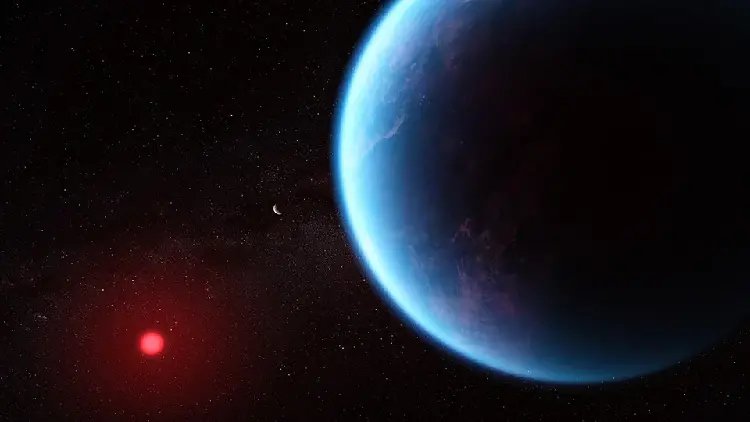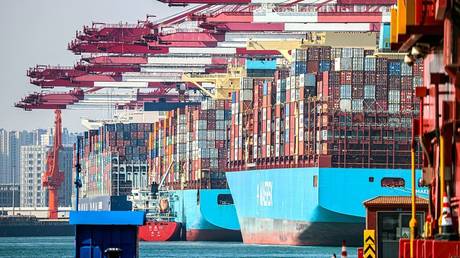Researchers Discover Most Compelling Proof So Far of Life on an Extraterrestrial World
In a potentially groundbreaking revelation, scientists using the James Webb Space Telescope have reported what they describe as the strongest indications yet of possible life beyond our solar system. They detected the chemical fingerprints...

The two gases observed—dimethyl sulfide (DMS) and dimethyl disulfide (DMDS)—are typically produced by living organisms on Earth, particularly by microbial life such as marine phytoplankton, or algae.
This discovery suggests that the planet, K2-18 b, might be rich in microbial life, according to the researchers. However, they emphasized that they are not claiming the discovery of actual living organisms but rather a potential biosignature—an indicator of a biological process. They urged caution, stating that further observations are necessary.
Despite the need for caution, researchers expressed enthusiasm about the findings. "These are the first hints of an alien world that is possibly inhabited," said astrophysicist Nikku Madhusudhan from the University of Cambridge's Institute of Astronomy, who is the lead author of the study published in the Astrophysical Journal Letters. "This is a transformational moment in the search for life beyond the solar system, where we have demonstrated that it is possible to detect biosignatures in potentially habitable planets with current facilities. We have entered the era of observational astrobiology," Madhusudhan added.
Madhusudhan also mentioned that various ongoing efforts are investigating signs of life in our solar system, focusing on locations like Mars, Venus, and several icy moons.
K2-18 b is significantly larger, being approximately 8.6 times more massive than Earth and about 2.6 times its diameter. It orbits in the "habitable zone," the region where liquid water—an essential ingredient for life—could exist on a planet's surface. This exoplanet orbits a red dwarf star smaller and less luminous than our sun, located about 124 light-years away in the constellation Leo. Another planet has also been detected orbiting this star.
Since the 1990s, astronomers have discovered around 5,800 exoplanets. They have proposed the existence of "hycean worlds," which are characterized by a liquid water ocean that can support microorganisms and a hydrogen-rich atmosphere.
Earlier analyses by Webb, which was launched in 2021, identified methane and carbon dioxide in the atmosphere of K2-18 b—the first instance of carbon-based molecules found in the atmosphere of an exoplanet within a star’s habitable zone. Madhusudhan noted, "The only scenario that currently explains all the data obtained so far from JWST, including the past and present observations, is one where K2-18 b is a hycean world teeming with life." He cautioned, "However, we need to be open and continue exploring other scenarios."
He elaborated that hycean worlds, if they exist, would likely host microbial life similar to what is found in Earth's oceans, theorizing that these oceans might be warmer than those on Earth. When asked about the possibility of multicellular organisms or intelligent life, Madhusudhan responded, "We won't be able to answer this question at this stage. The baseline assumption is of simple microbial life."
DMS and DMDS, which belong to the same chemical family, have been hypothesized as critical biosignatures for exoplanets. Webb detected one or both gases in K2-18 b's atmosphere at a confidence level of 99.7 percent, indicating a 0.3 percent likelihood that the observation could be a statistical anomaly. These gases were found at concentrations exceeding 10 parts per million by volume—"For reference, this is thousands of times higher than their concentrations in the Earth's atmosphere, and cannot be explained without biological activity based on existing knowledge," Madhusudhan stated.
Scientists not involved in the study advised caution regarding the implications of the data. "The rich data from K2-18 b make it a tantalizing world," commented Christopher Glein, principal scientist at the Space Science Division of the Southwest Research Institute in Texas. "These latest data are a valuable contribution to our understanding. Yet, we must be very careful to test the data as thoroughly as possible. I look forward to seeing additional, independent work on the data analysis starting as soon as next week."
K2-18 b belongs to the "sub-Neptune" class of planets, which have diameters greater than Earth's but smaller than that of Neptune, the smallest gas giant in our solar system.
To determine the chemical composition of an exoplanet's atmosphere, astronomers employ the transit method, analyzing light from its host star as the planet passes in front of it from Earth's vantage point. As the planet transits, Webb detects a decrease in stellar brightness, allowing a fraction of starlight to pass through the planetary atmosphere before being captured by the telescope, which enables scientists to identify the gases present in the atmosphere.
Previous observations of K2-18 b provided a tentative indication of DMS; the new findings utilized a different instrument and wavelength range. Madhusudhan remarked, "The 'Holy Grail' of exoplanet science is to find evidence of life on an Earth-like planet beyond our solar system." He added that humanity has pondered the question of "are we alone" in the universe for millennia, and now might be on the verge of detecting possible alien life on a hycean world.
However, he stressed the need for caution. "First, we need to repeat the observations two to three times to make sure the signal we are seeing is robust and to increase the detection significance to the level at which the odds of a statistical fluke are below roughly one in a million," he advised. "Second, we need more theoretical and experimental studies to ensure there isn't another abiotic mechanism that could produce DMS or DMDS in a planetary atmosphere like that of K2-18 b. Even though previous studies have suggested these as robust biosignatures, we need to remain open and explore other possibilities." Thus, the findings reflect "a big if" regarding whether the observations are indicative of life, and Madhusudhan underscored that it is "in no one's interest to claim prematurely that we have detected life."
Anna Muller for TROIB News
Discover more Science and Technology news updates in TROIB Sci-Tech












